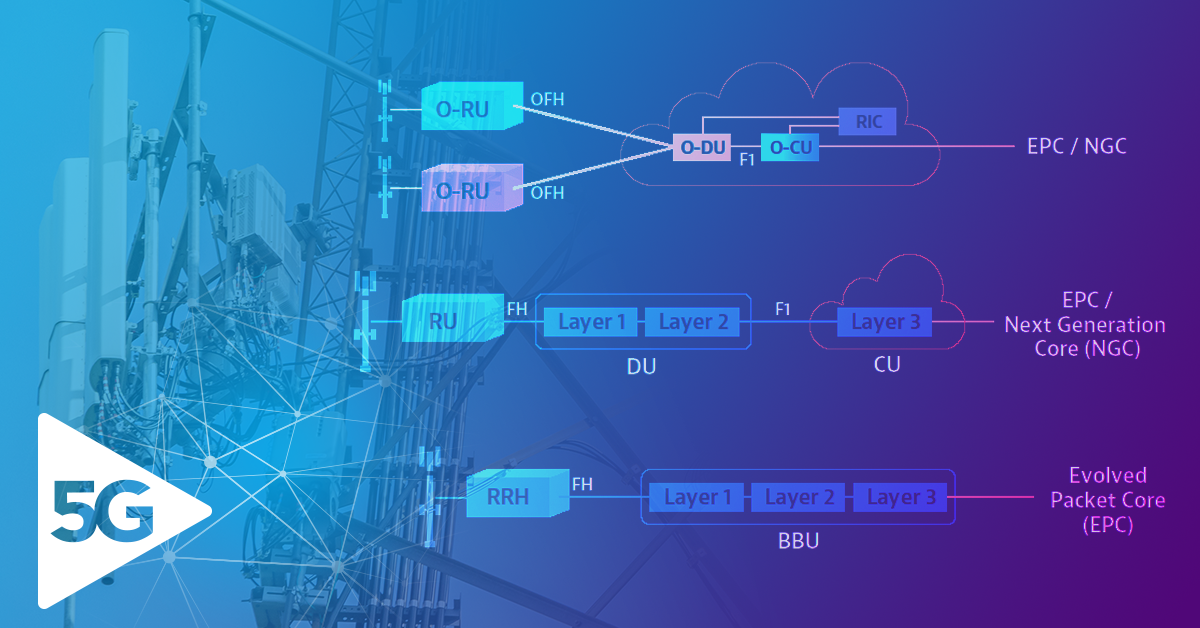3 Challenges You Might Face with Open RAN Deployment

3 challenges you might face with Open RAN deployment. The deployment and management of the radio access network (RAN) is the most expensive part of network. Today, new 5G radio access networks (RANs) are being developed to support a range of new features, including multiple-input, multiple-output (MIMO) antennas, large spectrum bandwidths and multi-band carrier aggregation. This poses a challenge for the growth and maintenance of networks, which today must support multiple generations of connectivity (3G, 4G and 5G), and scale to meet rising data demands.
Two initiatives – OpenRAN and O-RAN Alliance – are looking to enable a wider group of companies to participate in 5G by developing open standards that will lower the barriers to entry and give operators a wider pool of suppliers and a set of tools to manage interoperability. The two organisations have recently announced a liaison agreement to drive further interoperability amongst vendors.
OpenRAN, an initiative by the Facebook led TIP, aims to develop fully programmable RAN solutions based on General Purpose Processing Platforms (GPPP), increasing the number of companies that can supply components in the RAN. O-RAN Alliance is creating the specifications for open, interoperable interfaces for building virtualized RAN on open hardware.
Interoperability is key to the success of both initiatives and a third element: Open Test and Integration Center (OTIC) has been launched. This aims to validate activities between disaggregated 5G access infrastructure providers, according to the O-RAN specifications.
Operators across the globe are now testing and deploying Open RAN technology, helping them gain huge efficiencies in the ongoing running of their networks.
Open RAN deployment challenges
Historically, network operators have struggled to converge different vendor technologies, such as eNB, into the same network. Now, with the move towards Open RANs, operators and integrators need to test that all this technology works together before it goes into the live network.
One example of this challenge concerns the wide range of components being used by different vendors. How do you deliver the best possible service when optimising the configuration of the control plane? (the part of a network that carries signalling traffic and is responsible for routing).
It can often be difficult to establish where bottlenecks that reduce performance are e.g. to isolate where there are delays or slow responsiveness within the control plane. This can for instance affect the Call Attempts Per Second which can impact the performance of the gNB under high load conditions.
OTIC aims to offer a plug and play for end-to-end performance for this disaggregated equipment before deployment. However, it’s not just a case of testing the interoperability of distinct vendor technology as part of an Open RAN set-up. Operators also need to see how this technology interacts with legacy 4G equipment in the network, and how it responds to different UE environments. One example is ensuring the that Round-Trip-Time over 4G is not compromised when some users are on 5G NSA and other users are making a VoLTE call.
Another major challenge is, once the technology has been deployed, when a problem arises who solves it and how do you do this? The traditional single-vendor network has meant that when product-related network performance issues arise, operators can easily work with just one single vendor to solve the problem. With an Open RAN network, when a problem arises, you must work with multiple vendors to resolve the issue. Who takes the onus to resolve the issue when there are multiple vendors involved?
Solving Open RAN deployment challenges
Operators building disaggregated O-RAN networks will need to invest in multi-vendor testing themselves and will require a comprehensive test suite with modules for lab validation, field deployment and network assurance.
VIAVI has adopted the O-RAN Alliance fronthaul specifications, developing O-RAN compliant RAN and fronthaul test practices and establishing diverse partnerships within industry workgroups. This has led to VIAVI recently introducing the industry’s first Test Suite for O-RAN Specifications. This Test Suite can be seen as part of the O-RAN Alliance Virtual Exhibition
The suite includes component level wrap-around testing, vendor pairing evaluations to validate the function, performance, robustness and resilience of specific combinations, and protocol compliance testing for open interfaces. The test suite builds on a number of well-established tools supporting both lab and field deployments and adds O-RAN compliant capabilities to them. VIAVI’s end-to-end O-RAN testing portfolio includes the company’s – TM500 network tester, designed to validate the RAN by emulating thousands of mobile devices across multiple cells and radio access technologies this is particularly important to the development and pre-launch trials of 5G networks.
VIAVI’s TM500 can enable operators to test O-RAN network configurations in a lab environment, before rolling it out in a live network. Importantly, operators can stress test new O-RAN technology alongside legacy 4G technology, helping them understand how the introduction of the technology will impact the entire network. This can directly help support the aims of OTIC and help ensure that new O-RAN compliant infrastructure can be effectively deployed into networks and are compatible with legacy equipment.
Furthermore, TM500 can also be used to test and isolate problems in a live network, so that any problems that occur can be attributed to a specific vendor and easily resolved. One example is if there is an unacceptable delay across the network, it would be very challenging to narrow it down to a specific disaggregated network component. The VIAVI O-RAN Test Suite can isolate where the delays stem from, and thereby avoid wasted time in trial and error.
Another well-established part of the O-RAN test portfolio is the field-proven T-BERD/MTS-5800 solution can be used to validate the performance of the open fronthaul in the lab and in the field. Network vendors can quickly validate the health of the transport and synchronization performance. T-BERD/MTS-5800 allows lab engineers and field technicians to perform this validation in the live mode giving them visibility into the protocol messages between the O-DU and O-RU.
The VIAVI O-RAN Test Suite has been developed after extensively working with many of the NEMs and operators around the world. We are confident that it will help operators grow their networks, helping both businesses and consumers to enjoy the benefits of 5G.
Learn more about the VIAVI Test Suite for O-RAN Specifications in this White Paper





